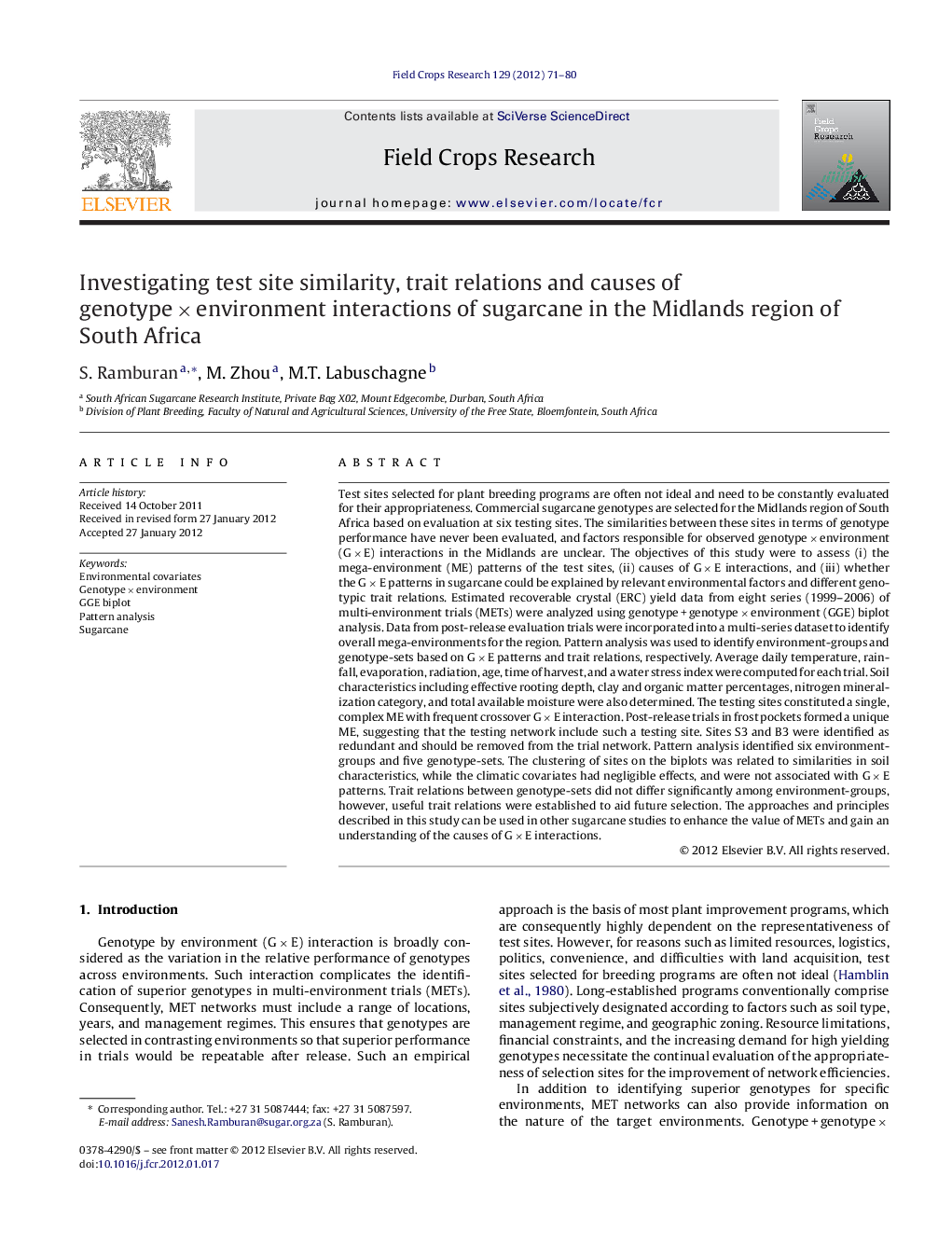| کد مقاله | کد نشریه | سال انتشار | مقاله انگلیسی | نسخه تمام متن |
|---|---|---|---|---|
| 4510537 | 1624734 | 2012 | 10 صفحه PDF | دانلود رایگان |

Test sites selected for plant breeding programs are often not ideal and need to be constantly evaluated for their appropriateness. Commercial sugarcane genotypes are selected for the Midlands region of South Africa based on evaluation at six testing sites. The similarities between these sites in terms of genotype performance have never been evaluated, and factors responsible for observed genotype × environment (G × E) interactions in the Midlands are unclear. The objectives of this study were to assess (i) the mega-environment (ME) patterns of the test sites, (ii) causes of G × E interactions, and (iii) whether the G × E patterns in sugarcane could be explained by relevant environmental factors and different genotypic trait relations. Estimated recoverable crystal (ERC) yield data from eight series (1999–2006) of multi-environment trials (METs) were analyzed using genotype + genotype × environment (GGE) biplot analysis. Data from post-release evaluation trials were incorporated into a multi-series dataset to identify overall mega-environments for the region. Pattern analysis was used to identify environment-groups and genotype-sets based on G × E patterns and trait relations, respectively. Average daily temperature, rainfall, evaporation, radiation, age, time of harvest, and a water stress index were computed for each trial. Soil characteristics including effective rooting depth, clay and organic matter percentages, nitrogen mineralization category, and total available moisture were also determined. The testing sites constituted a single, complex ME with frequent crossover G × E interaction. Post-release trials in frost pockets formed a unique ME, suggesting that the testing network include such a testing site. Sites S3 and B3 were identified as redundant and should be removed from the trial network. Pattern analysis identified six environment-groups and five genotype-sets. The clustering of sites on the biplots was related to similarities in soil characteristics, while the climatic covariates had negligible effects, and were not associated with G × E patterns. Trait relations between genotype-sets did not differ significantly among environment-groups, however, useful trait relations were established to aid future selection. The approaches and principles described in this study can be used in other sugarcane studies to enhance the value of METs and gain an understanding of the causes of G × E interactions.
► The similarity between selection sites was investigated using GGE biplot analysis.
► Genotype sets and environment groups were identified.
► One redundant test site was identified.
► Site clustering was due to similar soil types, while climatic covariates were not responsible for G × E patterns.
► Trait relations between genotype sets did not vary among environment groups.
Journal: Field Crops Research - Volume 129, 11 April 2012, Pages 71–80